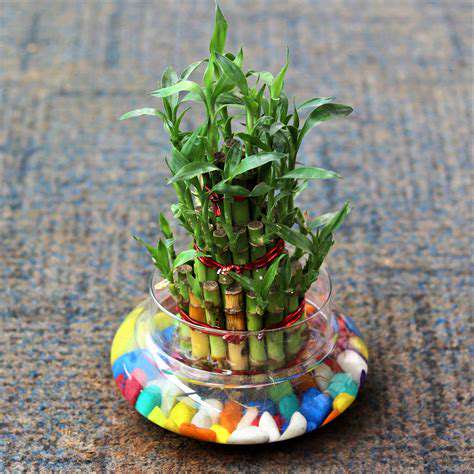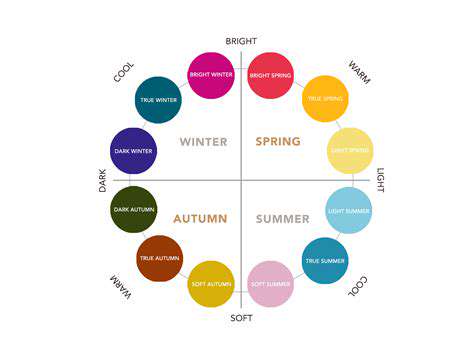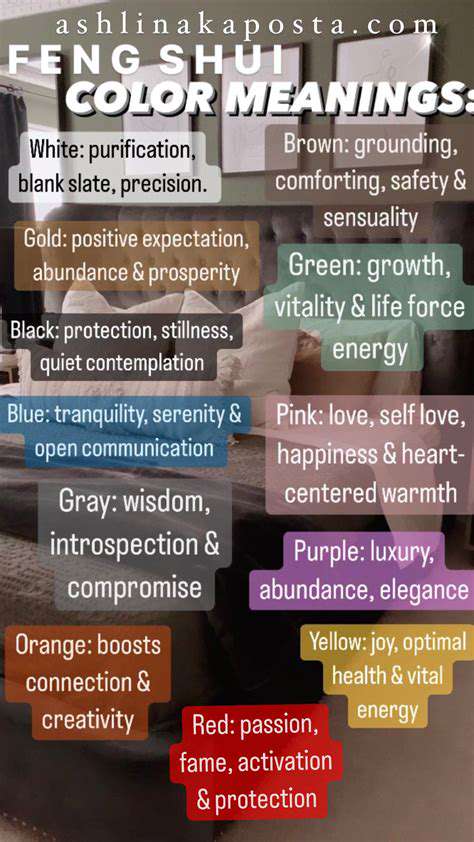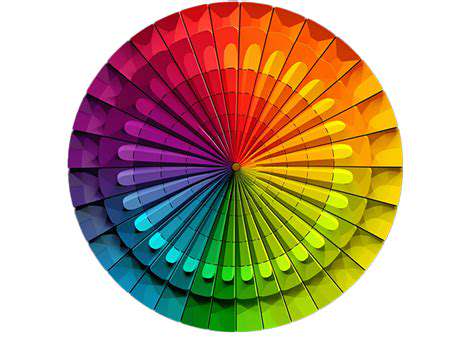Incorporating lucky bamboo into your décor
Caring for Your Lucky Bamboo: Essential Tips

Light Requirements
Lucky bamboo thrives in conditions mimicking its native environment - bright but filtered light. East-facing windows provide ideal morning light without harsh afternoon intensity. In darker spaces, full-spectrum grow lights placed 12-18 inches above the plant prevent etiolation.
Watch for telltale signs: pale leaves indicate insufficient light, while brown tips suggest excessive exposure. Adjust placement gradually to prevent shock.
Watering Practices
Water quality impacts bamboo health dramatically. Room temperature rainwater or filtered water prevents chemical buildup that causes leaf browning. For soil-grown bamboo, the finger test works best - water when the top inch feels dry.
In water arrangements, maintain consistent levels - too little stresses roots, while too much encourages algae. A charcoal piece in the water keeps it fresh longer between changes.
Nutrient Considerations
While low-maintenance, lucky bamboo benefits from occasional feeding. Use aquarium plant fertilizer at quarter strength to avoid salt buildup. Apply only during active growth periods (spring through early fall), allowing winter rest.
Signs of overfeeding include sudden leaf drop or white crust on container edges. Flush the system with pure water if these appear.
Temperature and Humidity
These tropical plants prefer consistent conditions. Drafty windows or heating vents create stressful microclimates. Grouping plants together raises local humidity, as does placing water trays nearby.
During winter, move arrangements away from cold glass. Summer air conditioning may require supplemental misting to prevent leaf desiccation.
Potting and Maintenance
Annual root pruning prevents overcrowding in containers. Sterilize tools between plants to avoid spreading pathogens. When repotting, use fresh growing medium and clean containers to reset the environment.
Regular inspection catches pests early. Spider mites leave fine webbing, while scale appears as small bumps. Neem oil treatments address most issues without harsh chemicals.
Beyond the Basics: Lucky Bamboo in Different Decor Styles
Modern Minimalism
In minimalist spaces, lucky bamboo shines through restraint. Single stalks in cylindrical glass vessels emphasize clean lines. Choose containers matching other metallic finishes in the room for cohesion.
Position arrangements where negative space highlights their form - on floating shelves or beside singular art pieces. This intentional placement makes the bamboo a focal point.
Bohemian Rhapsody
Bohemian style celebrates lucky bamboo's wilder side. Cluster varied heights in macrame hangers or vintage urns. Incorporate other air plants or trailing vines for lush abundance.
Add colorful glass beads to the water or wrap stalks with thin copper wire for artisan flair. These personal touches reflect the free-spirited boho aesthetic.
Rustic Charm
Rustic displays highlight bamboo's natural texture. Reclaimed wood planters with visible grain complement the vertical stalks. Add moss around the base for woodland appeal.
For farmhouse style, pair with galvanized metal accents. The contrast between industrial and organic elements creates visual interest.
Traditional Elegance
Formal spaces benefit from symmetrical arrangements. Match bamboo containers to existing hardware finishes - brass pots in traditional homes, silver-toned in more formal settings.
Place on polished surfaces like marble consoles or lacquered tables. The refined setting elevates the simple plant to art object status.
Coastal Vibes
Beach-inspired spaces use lucky bamboo as indoor sea grass. Whitewashed containers with rope details enhance the nautical theme. Add sand and shells as decorative elements.
Position near blue accents or woven textures to complete the seaside illusion. The bamboo's movement suggests ocean breezes.
Contemporary Glamour
For glam interiors, choose metallic or mirrored containers that reflect light. Arrange bamboo at varying heights like a sculptural installation.
Accent with crystal elements or place near statement lighting. The juxtaposition of organic and luxurious creates designer appeal.
Feng Shui Harmony
In Feng Shui applications, specific placements activate different life areas. The wealth corner (southeast) benefits from lush arrangements, while the fame area (south) thrives with red ribbon accents.
Always position bamboo where its growth direction supports the desired energy flow - upward for career advancement, outward for relationship expansion.










